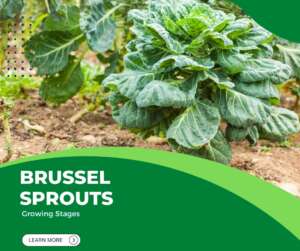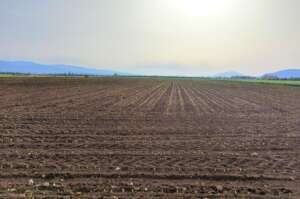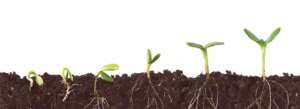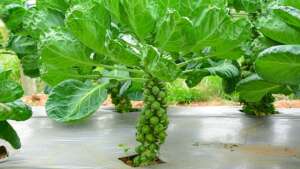Table of Contents
Want to know why everyone is talking about Brussel Sprout growing stages? Because many people are starting their vegetable gardens this year but don’t know where to start. The great thing is you’re at the right place. Here you’ll find some incredibly useful tips on Brussel sprout growing stages to keep in mind. Growing Brussel sprouts is one of the simplest ventures. Please read this article to learn all about it.
 Brussel sprouts growing stages – no one knows before
Brussel sprouts growing stages – no one knows before
Brussels sprouts are a cool-weather crop that can be grown in the garden from fall through spring. They are tolerant of heat and cold, but they do best in a cooler climate.
Brussel sprouts growing stages are important to keep in consideration. Brussels sprouts are best grown in raised beds with rich soil and plenty of organic matter. The plants need full sun, so they should be placed where they get at least eight hours of direct light every day.
Types of Brussel Sprouts
Early Brussel Sprouts
Early brussels sprouts are ready for harvest about six weeks after planting. These are small plants that produce small heads with tender leaves and buds. You can harvest them when they’re still green or wait until they turn yellow-tan or brownish-green before cutting off the plant at ground level.
Midseason Brussel Sprouts
Midseason brussels sprouts take about eight weeks from planting to maturity, so you can start harvesting them around the same time as early varieties. Like their earlier counterparts, these plants produce small heads with tender leaves and buds. You can harvest them at any size between 2 inches (5 cm) tall and 6 inches (15 cm) tall; just cut off the plant at ground level.
How to Grow Brussel Sprouts?
Preparation to sow
- Select a location with full sunlight for at least 6 hours a day. Brussel sprouts prefer cool temperatures, so be sure to choose a spot that receives plenty of shade during the summer months.
- Dig up a bed at least 18 inches deep and add compost or manure to it before planting your brussel sprout seeds or transplants. Plant them 1 foot apart in rows that are 3 feet apart, so they have plenty of room to grow without interfering with each other’s roots.
- Water your plants regularly, so they don’t dry out between waterings. Keep an eye on them if there is no rain in your area or if you have unusually hot weather.
How to grow F1 hybrid Brussels sprouts
- Brussels sprouts are a cool-weather crop, so they will not grow in hot temperatures or during the summer. You can plant seeds in early spring and harvest them in the fall. The best time to plant is after the last frost, usually around May 1st.
- Plant seeds one inch deep and three inches apart in rows six inches apart. Once the plants are a few inches tall, thin them out to be at least twelve inches apart.
- Transplanting Brussels Sprouts is best done in the late summer or early fall when they are about two-to-three weeks old. Transplant them into individual pots or flats filled with potting mix. Water thoroughly and keep moist until they’re established in their containers. Keep them indoors for about three weeks before planting outside so that their roots can acclimate to outdoor conditions.
When to start preparing the land and soil

Prepare the soil:
Brussel sprouts like loose soil with a pH between 6 and 7. Add compost to your garden bed before planting to ensure proper drainage and fertility. If you want to grow your own Brussels sprouts, here are some tips:
- Prepare the land and soil in advance. This will ensure that it is ready for planting when you are ready to sow your seeds or transplant seedlings. You’ll need to add compost to your soil before planting and dig holes for each seedling.
- Choose a sunny spot for your Brussel sprout plants. This will help them grow more quickly and produce more fruit, making harvesting easier! Sunlight also helps them develop chlorophyll, which gives them their green colour and helps protect them from damage caused by sunlight.
Plant seeds:
Brussel sprouts require full sun, so choose an area that gets at least eight hours of sunlight per day. Spread your garden bed with a thick layer of mulch (2 inches) to help retain moisture and prevent weeds from taking over your garden space. If you’re planting seeds, use starter trays for better germination rates and easier cultivation once they’ve sprouted.
Stages to grow Brussel Sprouts
Seedling stage

The first growth stage is when the seeds are planted in the soil. At this point, the seedlings are young and delicate and need to be kept moist. As long as they get enough water, they will grow up to two feet.
Transplanting stage
After three to five weeks, your Brussel sprouts should be ready to transplant into larger containers or raised beds. At this point, their roots may have become tangled and intertwined with one another, so it is important to separate them before transplanting them into the new soil.
Growing stage
Once transplanted into larger containers or raised beds, your Brussel sprouts should continue growing until they reach maturity (about four months). You can tell when they have reached maturity by looking at the base of their stalks; if they are starting to turn yellow or brown, it means that they are ready for harvest!
Harvesting stage
Harvest your Brussel sprouts when they’re still small and tight. They should be about golf-ball size and bright green, with no yellow or brown spots. If you wait too long to harvest them, they will become bitter and taste terrible.
Types of Brussel Sprouts

Brussels sprouts come in three types: early, midseason and late. The first two are both green and have a mild flavour. The third type is purple (or purple/green) when young and turns green when mature.
Problems facing Brussel sprout plants when growing
Brussel sprout plants have a long growing season. They need about 100 days to reach maturity, so be sure to plant them in the early spring or late summer so that they have time to grow and mature before the first frost arrives.
The temperature of the soil is also important for good growth. The ideal temperature for germination is between 50- and 75-degrees Fahrenheit (10-24 degrees Celsius), with temperatures varying from 45 to 65 degrees Fahrenheit (7-18 degrees Celsius) during the growing season.
Brussel sprout plants should never be planted in areas where they will be exposed to cold winds or frosty nights. They will not tolerate low temperatures well, especially when they are young seedlings.
It is also important not to let them dry out completely because this will affect their growth, development, and flavour once they are harvested and eaten
Final words
This article discussed all possible types, growth stages and problems while growing Brussel sprout faced by a gardener or a farmer. If you want to add more in given information, feel free to use comment box.
